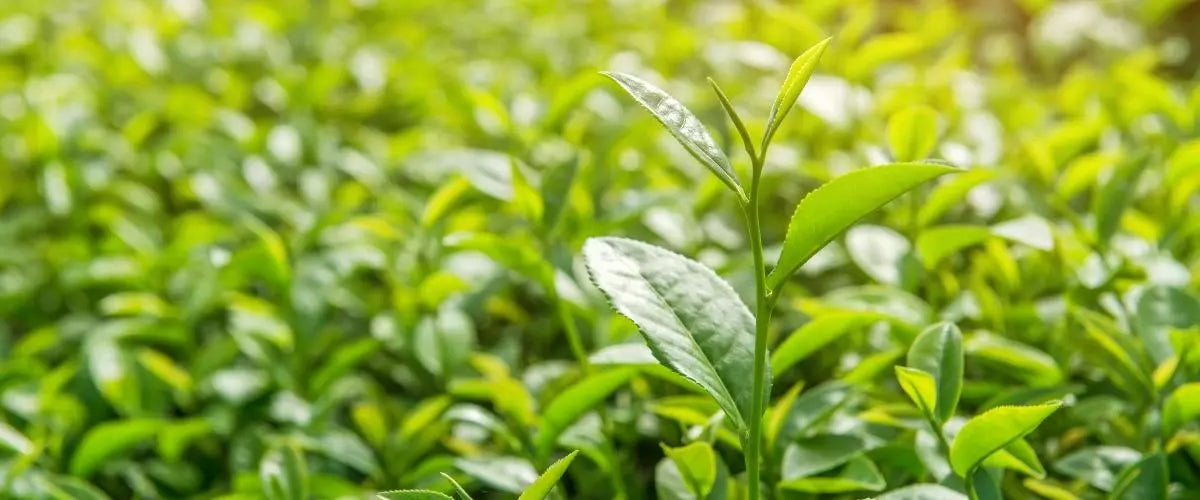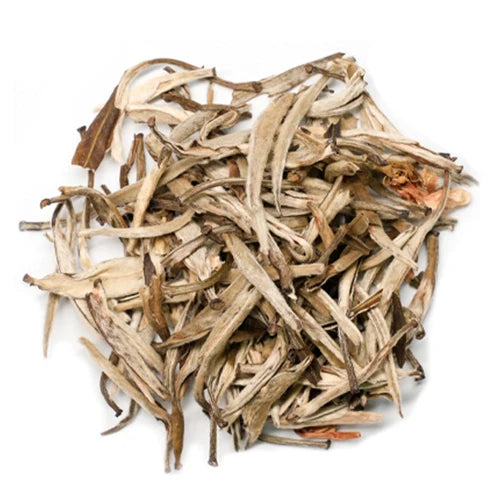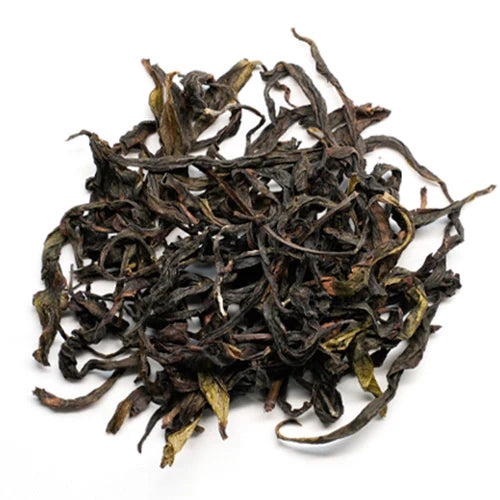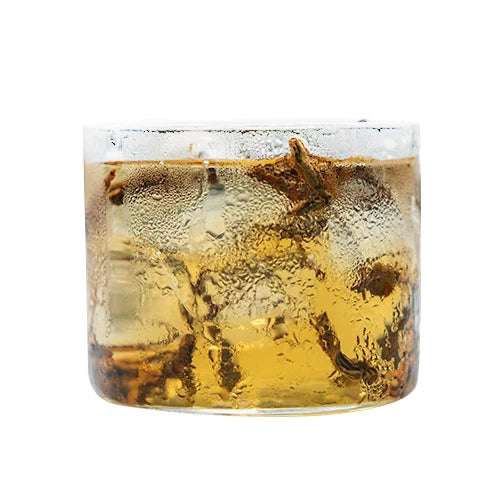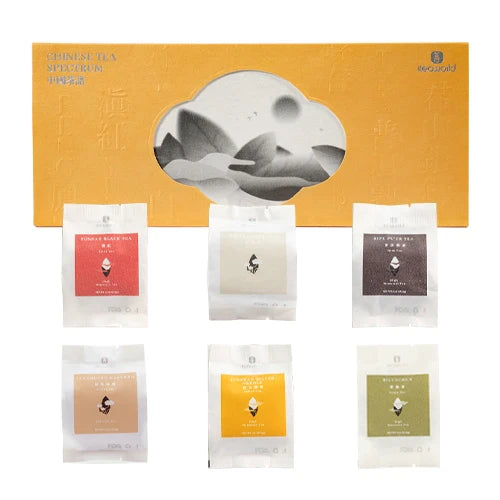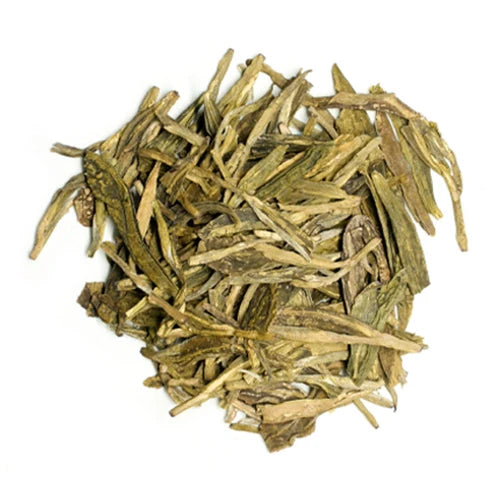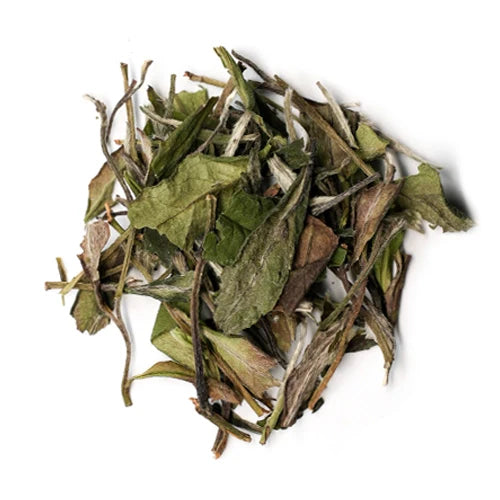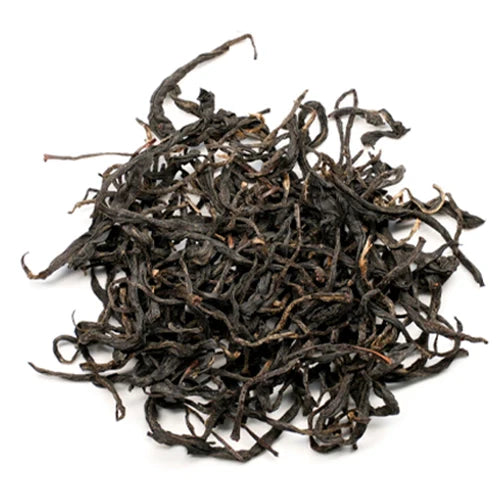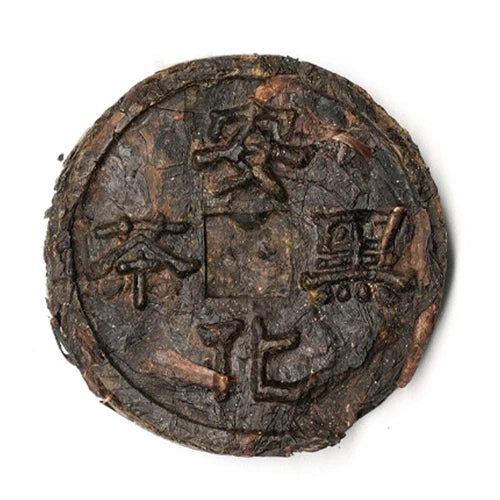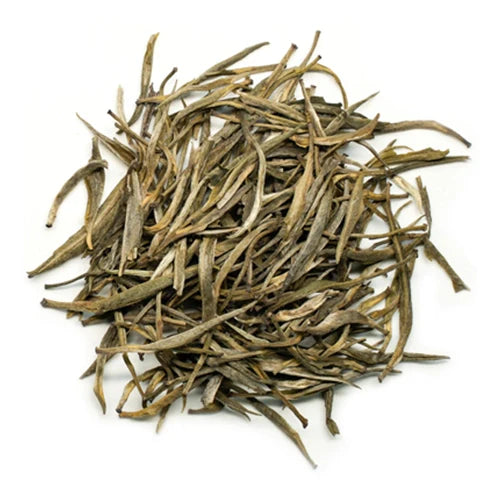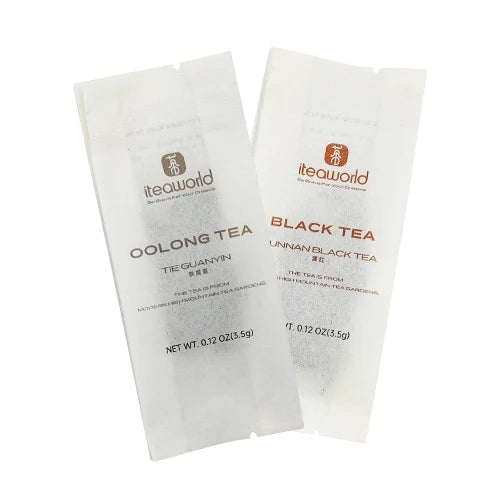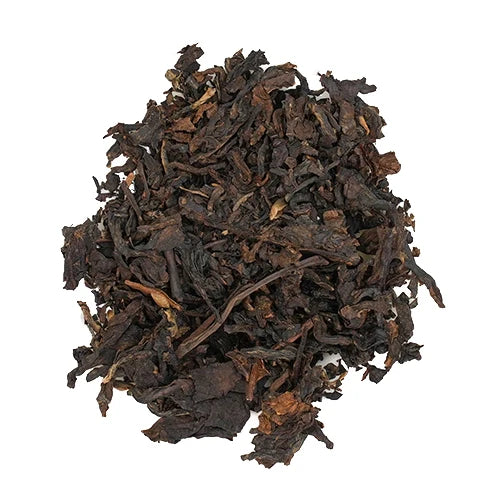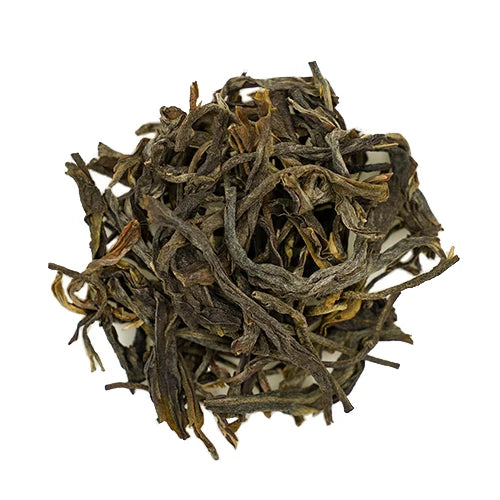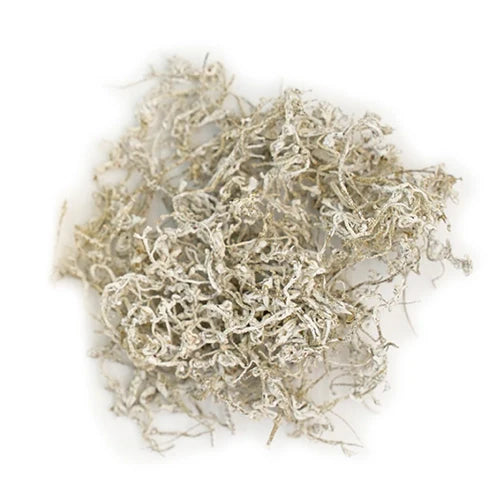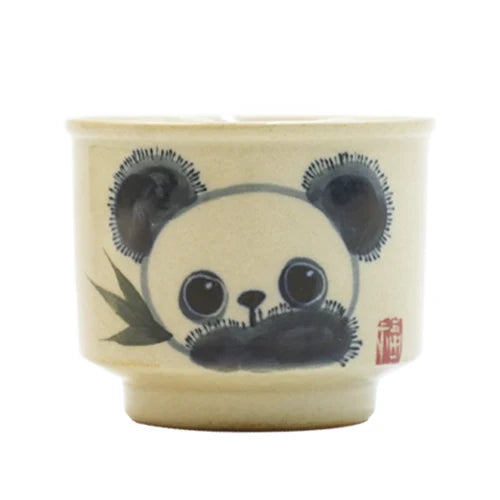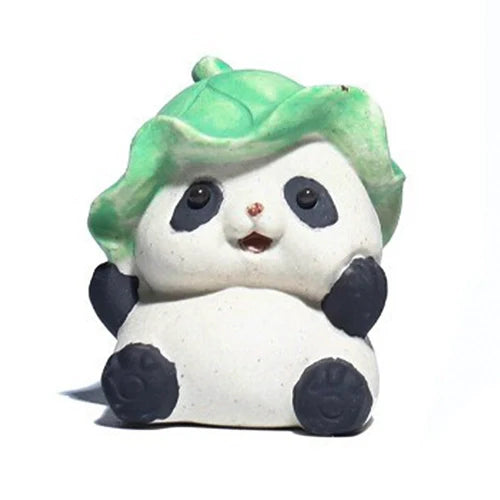Guide
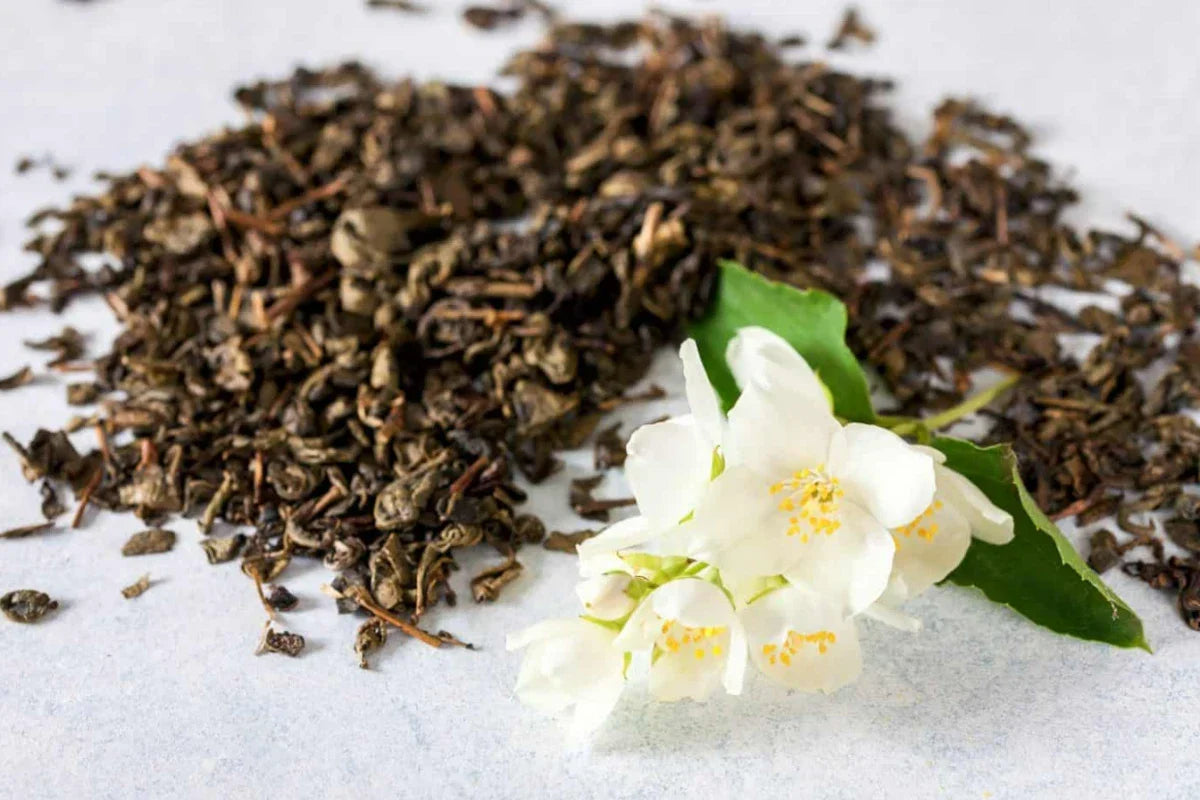
Jasmine Tea Varieties: What's Best for You?
Jasmine tea is a fragrant and soothing beverage that has been enjoyed for centuries. It is known for its delicate floral aroma and subtle flavor, making it a popular choice among tea enthusiasts around the world.
However, with so many Chinese jasmine tea varieties available, it can be challenging to determine which one is best suited for your taste preferences.
In this article, we will explore the different types of jasmine tea and help you discover the one that is perfect for you.
Jasmine Tea Varieties
Jasmine Green Tea
Jasmine green tea is the most common and widely available variety of jasmine tea. It is made by scenting green tea leaves with jasmine blossoms.
The delicate jasmine aroma blends harmoniously with the grassy notes of green tea, creating a refreshing and balanced cup of tea.
If you enjoy light and floral flavors, jasmine green tea is an excellent choice for you.
Jasmine Pearl Tea
Jasmine pearl tea, also known as jasmine dragon pearls, is a premium variety of jasmine tea. It is made by hand-rolling young green tea leaves into small pearls and then scenting them with jasmine flowers. This labor-intensive process results in a tea that is visually stunning and has a more intense flavor compared to jasmine green tea.
The tightly rolled pearls slowly unfurl during brewing, releasing the jasmine fragrance and creating a rich and aromatic brew. If you appreciate the artistry of tea-making and desire a stronger jasmine flavor, jasmine pearl tea is the way to go.
Jasmine White Tea
Jasmine white tea is a rare and delicate variety that combines the subtle flavors of white tea with the floral essence of jasmine. The tea leaves are harvested when they are young and covered with silver-white downy hairs, giving the tea its name.
The jasmine blossoms are then layered with the tea leaves, allowing the fragrance to infuse gently.
The resulting brew is light, fragrant, and slightly sweet. If you prefer a milder and more nuanced tea experience, jasmine white tea is an excellent choice.
Jasmine Oolong Tea
Jasmine oolong tea combines the characteristics of oolong tea with the captivating aroma of jasmine. Oolong tea is partially oxidized, resulting in a flavor profile that falls between green and black tea.
The leaves are carefully scented with jasmine flowers, creating a unique blend of flavors. Jasmine oolong tea offers a more robust and complex taste compared to other jasmine teas, with floral and fruity notes balanced by the natural sweetness of oolong tea.
If you enjoy a Chinese tea with depth and a lingering aftertaste, jasmine oolong tea is the perfect option for you.
Jasmine Herbal Tea
For those seeking a caffeine-free alternative, jasmine herbal tea is an excellent choice. Instead of using tea leaves, this variety is made by blending jasmine blossoms with herbs such as chamomile or mint.
The result is a soothing and aromatic infusion that can be enjoyed at any time of the day. Jasmine herbal tea offers a calming experience and is particularly popular for its relaxation and stress-relief properties.
What's Best Jasmine Tea for You?
Not the more expensive jasmine tea is the better for you, in order to find your best jasmine tea you should consider the following factors.
Flavor Profile
Consider the flavor profile you prefer. Jasmine green tea offers a light and refreshing taste with floral notes, while jasmine pearl tea tends to have a stronger jasmine flavor due to the tightly rolled pearls.
Jasmine white tea has a milder and sweeter taste, while jasmine oolong tea offers a more complex and robust flavor. Think about whether you enjoy delicate and subtle flavors or prefer stronger and more pronounced tastes.
Aroma
Jasmine tea is renowned for its fragrant aroma. Some teas have a more intense jasmine scent, while others may have a milder fragrance. If you enjoy a tea with a captivating and prominent floral aroma, jasmine pearl tea or jasmine oolong tea may be the right choice. If you prefer a lighter and more delicate aroma, jasmine green tea or jasmine white tea might be more suitable.
Caffeine Content
Consider your caffeine tolerance and preferences. Jasmine green tea and jasmine oolong tea contain caffeine, while jasmine white tea and herbal jasmine teas are typically caffeine-free. If you are sensitive to caffeine or prefer to avoid it, the caffeine-free options might be the best fit for you.
Brewing Method
Different jasmine teas may require specific brewing methods to bring out their best flavors. Some teas may require lower water temperatures or shorter steeping times, while others can withstand higher temperatures and longer steeping periods.
Consider your preferred brewing method and whether you are willing to experiment with different techniques to achieve the desired taste.
Personal Preference
Ultimately, personal preference plays a significant role in choosing the right jasmine tea. It may be beneficial to try different varieties, such as green, pearl, white, oolong, or herbal jasmine teas, to determine which one resonates with your taste buds and brings you the most enjoyment.
Quality and Source
Pay attention to the quality and source of the jasmine tea. Look for teas made from high-quality tea leaves and authentic jasmine blossoms. Consider purchasing from reputable tea brands or specialty tea shops known for their commitment to quality and sourcing practices.
Experimentation
Don't be afraid to experiment and try different jasmine tea varieties. Every individual has unique taste preferences, so exploring different options is the best way to find the jasmine tea that suits you best. Start with small quantities or sampler packs to sample a variety of jasmine teas before committing to larger quantities.
Iteaworld Chinese Jasmine Tea
iTeworld brings you exquisite loose leaf tea sampler! You will taste four different flavors of jasmine tea, they are BiLuoChun, MaoJian, ZhenWang and BaiHao.
This Tea Sampler can be one of the best tea gifts for your family and friends!
If you’re still uncertain about which jasmine tea suits you best, don’t worry! Our new Jasmine Tea Collection includes a variety of tea types, each designed to match different flavor profiles and preferences. From the light and floral Jasmine Green Tea to the more robust Jasmine Oolong Tea, this collection offers an ideal introduction to a wide range of jasmine tea experiences.
Plus, each tea is carefully scented with jasmine blossoms, ensuring you get that signature fragrance and refreshing flavor with every cup. Enjoy 20% OFF on this collection from September 28 to October 28 with the code Jasmine. Check out the collection here
Find your favorite Chinese Jasmine Tea
There are many varieties of jasmine tea. Whether it's the classic Jasmine Green Tea, the tantalizing Jasmine Pearl Tea, the delicate Jasmine White Tea, the complex Jasmine Oolong Tea, or the caffeine-free Jasmine Herbal Tea, each variety has its own unique appeal.When choosing a jasmine tea variety, it is important to consider your personal flavor preferences. Whether you prefer a light floral flavor or a stronger brew, there is a jasmine tea for everyone.
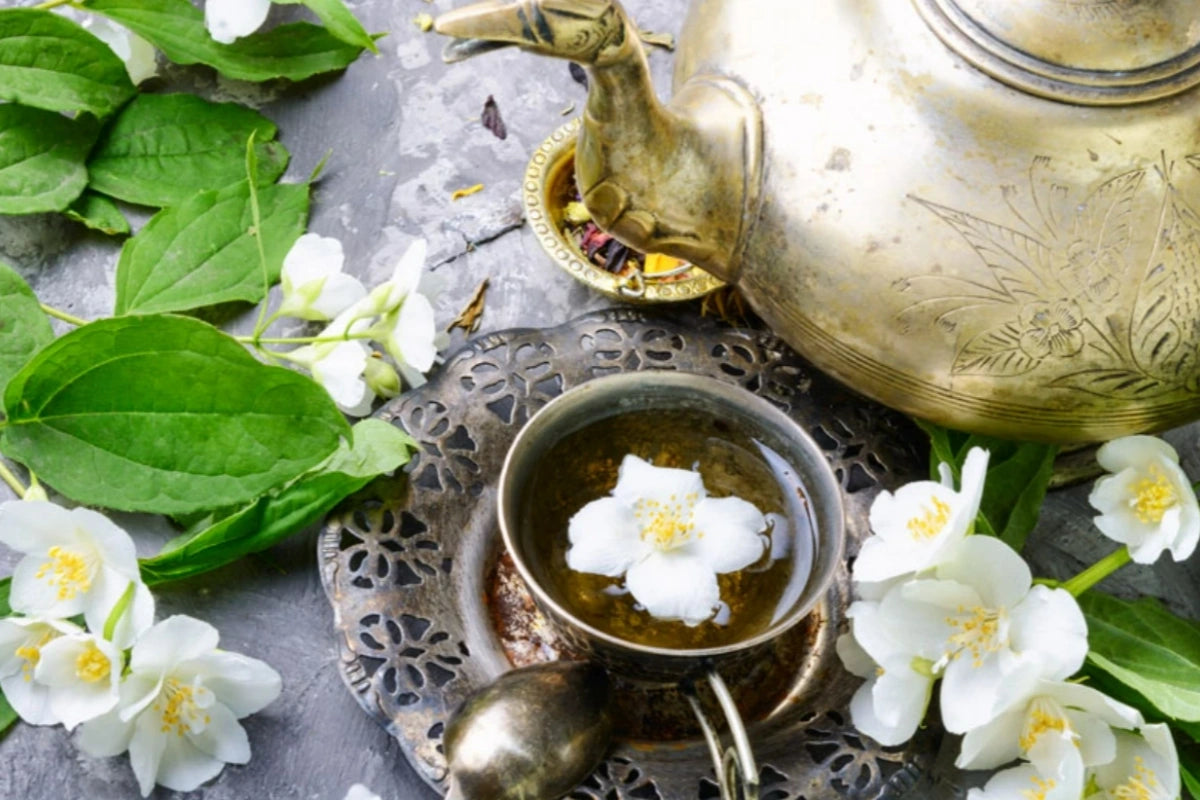
Chinese Jasmine Tea: Bringing You a New Aromatic Experience this Spring
Jasmine tea, renowned for its delicate floral aroma and captivating flavors, holds a special place in the hearts of tea enthusiasts worldwide. We invite you to embark on a sensory journey with our Jasmine Tea Sampler.
From the subtle nuances of 3-scented tea to the indulgent richness of 9-scented tea, our sampler allows you to savor the essence of Chinese spring and develop a deeper appreciation for the world of Jasmine tea.
Unveiling the Essence of Chinese Jasmine Tea
Jasmine tea has a long-standing tradition in Chinese culture, with its origins dating back centuries. Crafted through the meticulous process of "scenting," where tea leaves are infused with jasmine essence, this tea captures the delicate fragrance and flavors of the jasmine flower.
The higher the scenting level, the more time-consuming the crafting process, resulting in a premium-quality tea.
What you may want to know about jasmine tea?
What does jasmine tea taste like?
When brewed, jasmine tea unveils a harmonious combination of floral and vegetal notes. The taste is often described as smooth, mellow, and subtly sweet, with a lingering aftertaste.
The taste of jasmine tea can also be influenced by factors such as the brewing time, water temperature, and the specific variety of jasmine tea chosen. Some jasmine teas may have subtle hints of fruitiness or a light, honey-like sweetness.
How long to steep jasmine tea?
The steeping time for jasmine tea can vary depending on personal preference and the specific type of jasmine tea you are using. Jasmine tea is typically brewed using water that is around 175°F (80°C). The recommended steeping time for jasmine tea is usually between 2 to 3 minutes. If you prefer a stronger flavor, you can steep the tea for a slightly longer duration, but be cautious not to exceed 4 minutes to avoid bitterness.
How much caffeine in jasmine tea?
A cup of jasmine tea brewed from green tea leaves contains about 20-30 milligrams of caffeine per 8-ounce (240 ml) serving. In general, jasmine tea tends to have a lower caffeine content compared to other types of tea such as black tea . If you are particularly sensitive to caffeine or prefer to limit your intake, you may opt for a shorter steeping time or choose a lower-caffeine variety of chinese tea for your jasmine tea.
What is China jasmine tea good for?
The all-powerful antioxidants in jasmine tea can help support your immune system by fighting bacteria and infections. As well as this, the tea has anti-inflammatory properties, so it can help reduce pain and prevent general damage to your body.
What are the types of jasmine tea?
There are many types of tea sets, including jasmine Biluochun, jasmine Maojian, jasmine Zhenwang, Jasmine White Tea, jasmine black tea and jasmine oolong tea.
How do you use Chinese jasmine tea?
Chinese jasmine tea can be used in many ways. The most traditional and popular method is to brew Chinese jasmine tea with hot water. In the summer, you can also enjoy refreshing cold brew jasmine tea by steeping the tea leaves in cold water.
Jasmine tea can be used as an ingredient in cooking and baking, it can be added to desserts, sauces, marinades, and even used as a flavoring for rice.
Is it OK to drink jasmine tea everyday?
Yes, you can drink jasmine tea every day. You can drink about 2-3 cups of jasmine tea daily to reap the health benefits and boost metabolism.
Get Unique Jasmine Tea Sampler Experience
Our Jasmine Tea Sampler includes four distinct varieties of jasmine tea, each offering a unique sensory experience.
Jasmine Bi Luo Chun (3-Scent)
Delight in the subtle and refreshing flavors of Jasmine Bi Luo Chun, a fusion of tender leaves and jasmine essence. Crafted through a meticulous 3-scenting process, this tea captures the essence of spring and offers a mellow taste with a moderate intensity of jasmine fragrance.
Jasmine Mao Jian (5-Scent)
Experience the harmonious balance of Jasmine Mao Jian, where fine leaves intertwine with jasmine essence in a nuanced cup. Perfected through a careful 5-scenting process, this tea offers a sweet and mellow flavor with a refreshing hint of aftertaste and a pronounced jasmine aroma.
Jasmine Zhen Wang (7-Scent)
Indulge in the regal sophistication of Jasmine Zhen Wang, a blend of royal leaves and jasmine essence. Achieved through a perfected 7-scenting process, this tea delivers a fresh, smooth taste with an evident aftertaste and a rich jasmine fragrance.
Jasmine Bai Hao (9-Scent)
Immerse yourself in the pinnacle of craftsmanship with Jasmine Bai Hao, combining intense jasmine fragrance with Bai Hao leaves in an exceptional 9-scenting process. This tea boasts a crisp and robust flavor, a strong and lingering aftertaste, and a distinct 'rock sugar sweetness' in its rich and lasting jasmine aroma.
Tea Bags Included
To ensure your tea moments are worry-free, our Tea Sampler includes 20 complimentary biodegradable tea bags. These corn starch tea bags make brewing effortless and convenient, eliminating the need for a separate filter. Whether you're at home, in the office, or on the go, you can savor your favorite jasmine tea anywhere with ease.
Brewing Techniques and Versatility
Jasmine tea offers versatility in brewing styles, allowing you to unlock its full flavor potential. The Kung Fu Tea Brewing Method, the Cold Brewing Method, and the Tea Bag Brewing Method all provide unique ways to enjoy the nuanced taste and aroma of jasmine tea. From traditional brewing techniques to modern cold brews, you can tailor your tea experience to your preferences.
Sustainable and Eco-Friendly Commitment
At iteaworld, we are committed to sustainable development and eco-friendly practices. With our packaging made from FSC-certified paper and soy ink, we prioritize the protection of nature, one sip at a time.
(White Jasmine Tea)
By choosing iteaworld Tea Sampler, you not only indulge in exquisite tea but also contribute to a greener future.
Enjoy jasmine tea this spring
Jasmine flower tea captivates with its enchanting floral aroma and delicate flavor, making it a beloved choice among tea enthusiasts. This aromatic infusion combines the antioxidant-rich properties of tea with the calming and soothing effects of jasmine flowers. Chinese Jasmine Tea brings you a new tea tasting experience in spring.
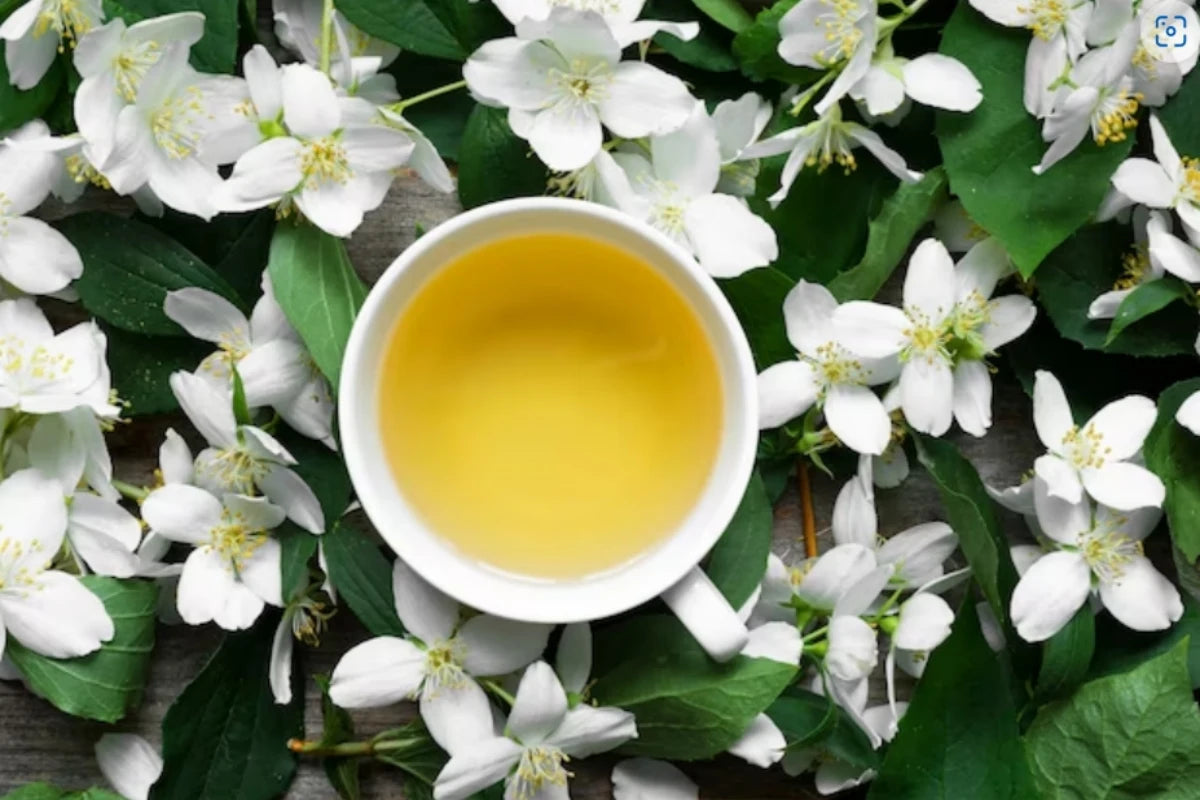
These You Need to Know About Flavoring Jasmine Tea
Jasmine tea, with its delicate floral aroma, is a beloved beverage known for its soothing qualities. In this article, we will delve into the art of flavoring jasmine tea, exploring various methods and combinations to create a personalized and delightful tea experience.
Understanding the Basics of Jasmine Tea
Jasmine tea originates from China and is made by combining green tea leaves with jasmine blossoms. The delicate floral aroma of the jasmine flowers permeates the tea, creating a harmonious blend of flavors.
Jasmine tea is typically known for its subtle sweetness and a hint of floral fragrance. By flavoring Chinese jasmine tea, you can further elevate its taste profile to suit your preferences.
How to Flavor Your Jasmine Tea?
Natural Additions: Citrus, Mint, Ginger, and Honey
One of the simplest ways to flavor your jasmine tea is by incorporating natural additions. Citrus fruits like lemon, lime, and orange can provide a refreshing and tangy twist to your loose leaf tea. Squeeze a slice of your preferred citrus fruit into your cup of jasmine tea to infuse it with a vibrant citrus flavor.Another option is to add a sprig of fresh mint leaves, which will impart a cool and invigorating taste to your tea. For those who enjoy a hint of spiciness, slice a small piece of fresh ginger and add it to your jasmine tea.
This will introduce a warm and distinctive kick to the overall flavor profile. If you prefer a touch of sweetness, stir in a teaspoon of honey to balance the floral notes of the jasmine tea.
Fruit Infusions: Berries, Peach, Mango, Apple, and Pear
Fruit infusions can bring a burst of natural sweetness and fruity flavors to your jasmine tea. Crush a few fresh berries, such as strawberries or raspberries, and steep them with your jasmine tea to create a delightful and refreshing infusion. The natural sugars from the berries will infuse into the tea, adding a subtle sweetness and a hint of tartness.
For a tropical twist, add diced pieces of fresh or frozen peach or mango to your tea during the brewing process. The juicy and aromatic characteristics of these fruits will blend harmoniously with the floral notes of the jasmine tea, transporting you to a tropical paradise with every sip.
If you prefer a milder fruit infusion, consider slicing an apple or pear and simmering it with your jasmine tea. This gentle simmering process will release the flavors of the fruits, resulting in a fragrant and subtly sweet infusion that complements the delicate nature of jasmine tea.
Floral Enhancements: Rose Petals, Lavender, and Chamomil
Adding floral elements to your jasmine tea can create a truly enchanting experience. Dried rose petals can be mixed with the jasmine tea leaves before brewing, infusing the tea with a delicate and romantic blend of floral flavors. The combination of jasmine and roses creates a harmonious symphony of scents and tastes.Lavender, with its calming and aromatic properties, can be added in small quantities to your jasmine tea for a soothing infusion. The gentle floral notes of lavender will complement the jasmine tea, enhancing its relaxing qualities and providing a serene tea-drinking experience.Chamomile, known for its calming effects, can be blended with jasmine tea to create a soothing and floral infusion. This combination is perfect for those seeking a tea that promotes relaxation and tranquility.
Spices and Herbs: Cinnamon, Cardamom, Star Anise, Cloves, Basil, and Lemongrass
Spices and herbs can add depth and complexity to your loose leaf tea sampler, transforming it into a truly unique and flavorful brew. Cinnamon sticks or crushed cardamom pods can be added to your tea for a warm and comforting flavor. These spices infuse the tea with their aromatic qualities, creating a cozy and inviting cup.
For a hint of spiciness, consider adding star anise or cloves to your jasmine tea. These spices bring a unique and exotic twist to the flavor profile, adding a touch of intrigue to your tea experience.If you prefer herbal accents, fresh basil leaves or lemongrass stalks can be steeped with your jasmine tea. The herbal infusion will provide a refreshing and aromatic dimension to your tea, invigorating your senses with every sip.
Conclusion
Flavoring your tea sampler opens up a world of possibilities, allowing you to personalize your tea experience and explore a wide range of delightful flavors.
Whether you prefer natural additions like citrus and herbs, infused fruits, or the aromatic touch of floral enhancements and spices, each method brings its own unique charm to your loose leaf tea sampler.
By experimenting with different combinations and proportions, you can create a tea that perfectly suits your taste preferences and mood.
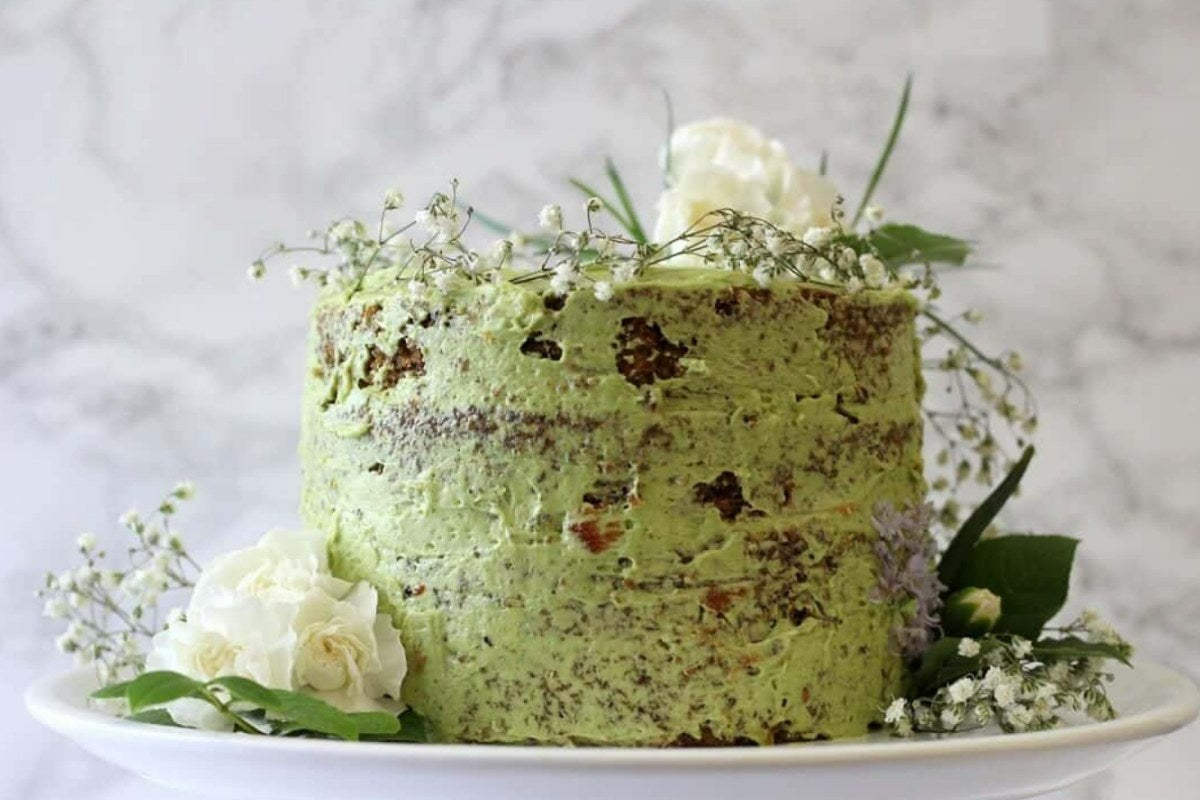
A Complete Guide to How to Pair Chinese Jasmine Tea with Food
Chinese Jasmine tea, with its captivating floral aroma and delicate flavor, has been a beloved beverage for centuries.
While savoring this traditional tea on its own is a delightful experience, pairing it with food can elevate your taste buds to new heights. In this article, we will explore how to pair Chinese Jasmine tea with food.
Understanding Chinese Jasmine Tea
Chinese Jasmine tea is typically made by combining high-quality green tea leaves with freshly harvested jasmine blossoms. The tea leaves are carefully layered with the flowers, allowing them to absorb the sweet, floral fragrance.
The result is an exquisite tea with a smooth, grassy flavor and a captivating aroma. You can find jasmine oolong tea, jasmine green tea, jasmine pearl tea and more.
At itaworld, you can find our jasmine tea. This jasmine tea sampler contains four jasmine tea types, namely Bi Luo Chun, Mao Jian, ZhenWang and Bai Hao.Beautifully packaged and made with intricate craftsmanship, this jasmine tea sampler is suitable for beginners and jasmine tea lovers.
Pairing Tips for Chinese Jasmine Tea
Steamed Seafood and Dim Sum
Chinese Jasmine tea pairs beautifully with steamed seafood, such as fish, shrimp, or scallops. The tea's floral notes complement the delicate flavors of the seafood, creating a harmonious combination. Additionally, it is a classic pairing with traditional dim sum dishes, enhancing the overall dining experience.
Light Vegetables and Stir-Fries
Jasmine tea brings a refreshing element to light vegetable dishes. Pair it with stir-fried bok choy, snow peas, or broccoli to add a subtle floral layer to the greens. The tea's bright flavors can balance the earthiness of the vegetables, resulting in a well-rounded and satisfying combination.
Roasted or Grilled Meats
For heartier dishes, consider pairing Chinese Jasmine tea with roasted or grilled meats. The tea's floral aroma can cut through the richness of the meat, providing a refreshing contrast. Try it with roasted chicken, char siu (barbecue pork), or grilled lamb for a delightful balance of flavors.
Jasmine tea paired with roasted or grilled meats will be a delightful surprise at your summer party. Imagine enjoying delicious grilled meats and sipping on refreshing jasmine tea in a summer setting—what a wonderful experience that would be.
Fragrant Rice and Noodle Dishes
Pairing Chinese Jasmine tea with fragrant rice or noodle dishes is a match made in culinary heaven. The tea's floral essence enhances the aroma of jasmine rice and complements the flavors of dishes like fried rice, biryani, or noodle stir-fries. This combination offers a delightful interplay of scents and tastes.
Light Pastries and Desserts
Chinese Jasmine tea pairs well with light pastries and desserts, especially those with floral or fruity elements. Sip the tea alongside jasmine-infused cakes, fruit tarts, or lychee-flavored desserts. This pairing is also a classic choice for summer picnics or tea parties.
The tea's subtle sweetness and floral notes harmonize with these delicate treats, creating a delightful balance.
If you're looking to elevate your tea and food pairing experience, don’t miss out on our new Jasmine Tea Collection. With a variety of jasmine tea options like Jasmine Mao Feng, Jasmine Dragon Pearls, and Jasmine Silver Needle, these teas can complement a range of dishes from seafood to light pastries and desserts. Experiment with these new varieties and discover even more delightful combinations.
Get 20% OFF from September 28 to October 28 with the code Jasmine. Shop the collection now.
What are Key considerations?
Tea's Intensity
Chinese Jasmine tea can vary in intensity, depending on the quality of the tea leaves and the duration of the scenting process. When pairing it with food, consider the strength of the tea sampler. Lighter Jasmine teas work well with delicate dishes, while stronger ones can stand up to bolder flavors.
Temperature
Consider the temperature of both the tea and the food. Hot Jasmine tea can be a comforting match for warm dishes, while chilled or iced Jasmine tea provides a refreshing contrast to spicy or fried foods.
Experiment and Trust Your Palate
Don't be afraid to explore and experiment with different food pairings. Personal preferences vary, so trust your taste buds and discover your own favorite tea combinations.
Quality Matters
Opt for high-quality Jasmine tea to ensure the best flavor and aroma. Look for teas made with fresh jasmine blossoms and loose-leaf tea for the most authentic and enjoyable experience.
Conclusion
Pairing Chinese Jasmine tea with food is a delightful way to explore the interplay of flavors and aromas. Whether you choose to pair it with seafood, vegetables, meats, or desserts, the key is to find a harmonious balance that enhances both the tea and the food.
Remember to consider the intensity of the Chinese tea, experiment with different dishes, and trust your palate to create memorable and enjoyable combinations.
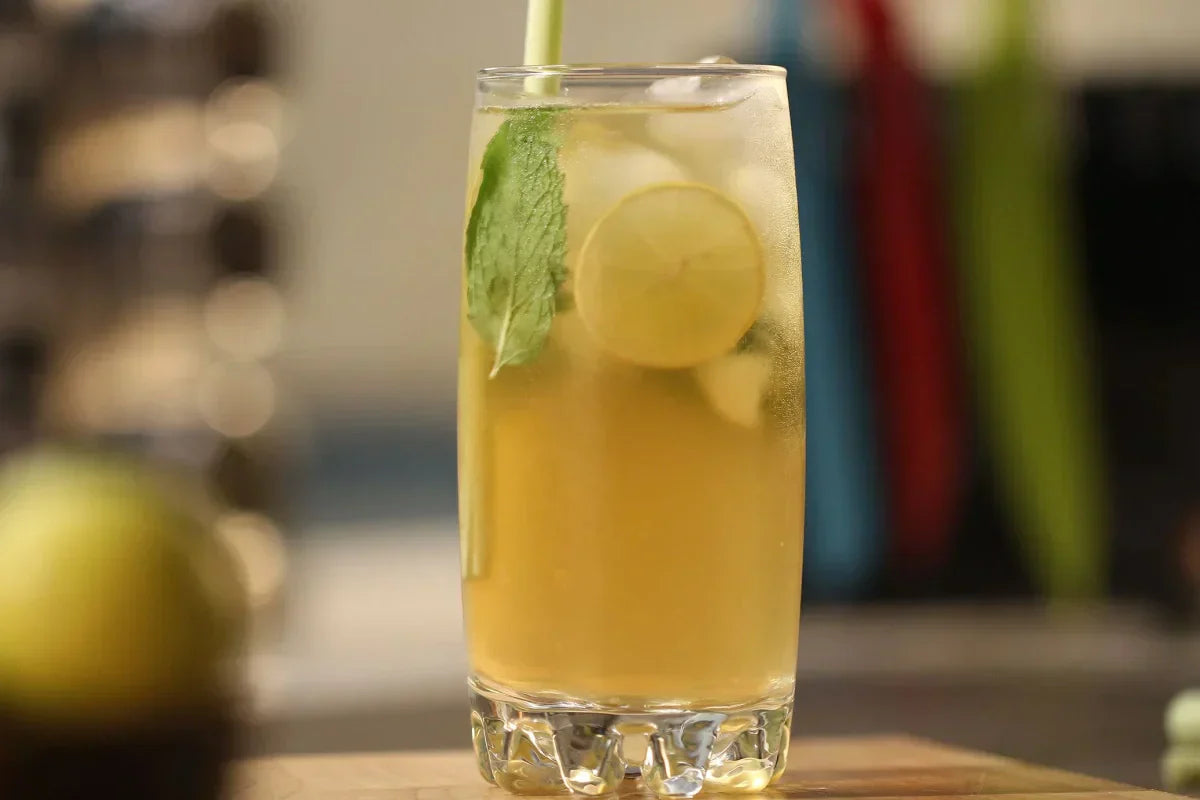
Jasmine tea is renowned for its delicate floral aroma and soothing taste. Its versatility extends beyond the teacup, as it can add a unique twist to cocktails.
Whether you're hosting a party or simply looking to elevate your mixology skills, incorporating Jasmine tea into your cocktails can offer a refreshing and aromatic experience.
In this article, we will explore six tips to help you create delightful Jasmine tea cocktails that will impress your guests.
Selecting the Perfect Jasmine Tea
The foundation of any great cocktail lies in the quality of its ingredients. When it comes to best jasmine tea, opt for loose-leaf teas rather than tea bags. Loose-leaf teas tend to provide a more robust and authentic flavor. Look for high-quality teas that offer a strong and fragrant jasmine aroma to ensure that the floral notes shine through in your cocktails.
What are the types of jasmine tea?
· Jasmine Green Tea
Jasmine Green Tea is made by blending high-quality green tea leaves with jasmine blossoms. The tea leaves are harvested, processed, and then layered with fresh jasmine flowers. As the flowers bloom, their aroma is absorbed by the tea leaves, infusing the tea with the distinctive floral fragrance. The result is a light and smooth tea with a balanced combination of grassy notes from the green tea and the sweet, floral essence of jasmine.
· Jasmine Pearl Tea
Jasmine Pearl Tea, also known as Jasmine Dragon Pearls, is a specialty type of Jasmine tea that undergoes a more intricate production process.
It is made by hand-rolling tightly curled tea leaves into small pearls, which are then scented with jasmine blossoms. The rolling process helps preserve the tea's flavor and aroma.
· Jasmine White Tea
Jasmine White Tea is made from young tea buds and leaves that are picked before they fully open. The delicate nature of white tea combined with the jasmine blossoms results in a milder and subtler flavor profile. It offers a light and refreshing cup with a gentle floral aroma.
· Jasmine Oolong Tea
Jasmine Oolong Tea combines the rich and complex flavors of loose leaf oolong tea with the floral fragrance of jasmine.
Oolong teas are partially oxidized, resulting in a wide range of flavors, from light and floral to darker and more roasted notes.
Cold Brew for a Smooth Flavor
To extract the delicate flavors of Jasmine tea without any bitterness, consider cold brewing the tea. Cold brewing involves steeping the tea leaves in cold water for an extended period, typically several hours or overnight. This method allows the flavors to infuse gently, resulting in a smoother and less astringent taste. The resulting cold-brewed Jasmine tea is perfect as a base for your cocktails.
Experiment with Flavor Combinations
Jasmine tea serves as an excellent canvas for creative flavor combinations. Consider adding fresh fruits like peaches, strawberries, or citrus fruits to your cocktails. These fruity additions can complement and enhance the floral notes of the tea. Additionally, herbs such as mint or basil can add a refreshing twist and bring new dimensions to your Jasmine tea cocktails. Don't be afraid to experiment with different ingredients to discover unique and delightful flavor profiles.
Sweeten with Simple Syrup
To achieve a well-balanced cocktail, it's crucial to incorporate the right amount of sweetness. Simple syrup, made by dissolving equal parts sugar and water, is an excellent choice for sweetening Jasmine tea cocktails. To infuse additional flavors, consider creating flavored syrups using ingredients like vanilla or lavender. Adjust the sweetness to your preference by adding more or less syrup, ensuring it complements the flavors of the Jasmine tea.
Enhance with Spirits or Liqueurs
To elevate your Jasmine tea cocktails, consider incorporating spirits or liqueurs that complement the delicate flavors of the tea. Vodka, gin, rum, or even elderflower liqueur can work harmoniously with Jasmine tea. Experiment with different combinations to find the perfect balance of flavors that suits your palate. Remember to start with smaller amounts of alcohol and adjust accordingly to maintain the integrity of the tea's taste.
Creative Garnishes for Visual Appeal
Aesthetics play a significant role in the overall cocktail experience. Elevate your Jasmine tea cocktails with creative and visually appealing garnishes. Fresh jasmine flowers, edible flowers, or citrus twists make stunning and aromatic additions.
Sprigs of mint or slices of fruit can also enhance the flavors and add a touch of elegance to your drinks. Experiment with different garnishes to create a visually captivating and enticing presentation.
Conclusion
Incorporating Chinese Jasmine tea into your cocktail repertoire opens a world of possibilities. Remember to select high-quality tea, cold brew for a smoother flavor, experiment with flavors, sweeten with simple syrup, enhance with spirits or liqueurs, and garnish creatively.
With these tips in mind, you'll be well on your way to impressing your guests with refreshing and captivating chinese tea cocktails. Cheers to your mixology adventures!
As you explore the art of crafting perfect Jasmine tea cocktails, consider trying our new Jasmine Tea Collection for an elevated and fragrant twist. This collection, featuring Jasmine Red Tea, Jasmine Mao Feng, Jasmine Dragon Pearls, and more, offers a variety of flavors to experiment with, perfect for any tea-based cocktail recipe.
With eco-friendly tea bags, spring 2025 fresh harvests, and beautifully packaged gift boxes, it’s a great choice for both personal enjoyment and thoughtful gifting. Plus, enjoy 20% OFF from September 28 to October 28 with the code Jasmine. Browse the collection here
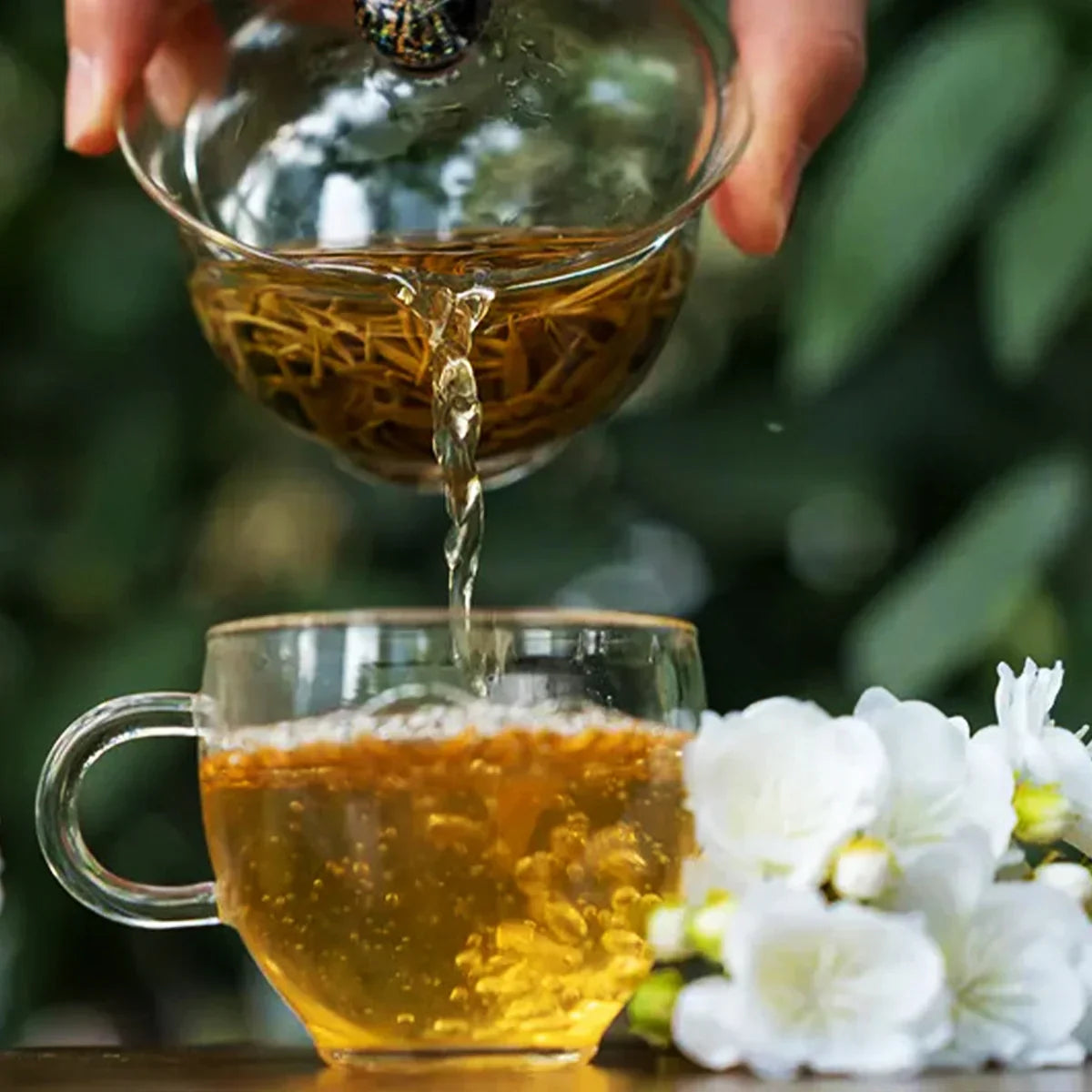
The Difference Between Jasmine Tea and Green Tea
Both jasmine tea and green tea are beloved in China and around the world. But are they the same thing? Let’s explore their origins, flavors, and how to choose.
What is green tea?
Loose leaf green tea is one of the six major types of Chinese tea. Its main difference from oolong or black tea is that it’s non-fermented.
The production steps include Shaqing (kill-green), rolling, and drying—methods that preserve the leaf’s natural green color. That’s why green tea is often described as “clear soup and green leaves.”
China produces over a hundred varieties. Famous ones include Longjing (Dragon Well), Biluochun, Huangshan Maofeng, and Liuan Guapian.
What is jasmine tea?
Loose leaf jasmine tea is not one of the six tea categories. Instead, it’s a scented tea made by blending tea leaves with fresh jasmine blossoms.
The flowers infuse their fragrance into the tea, producing a lively and long-lasting aroma—earning jasmine tea the nickname “the first fragrance on earth.”
Base teas vary: green, black, oolong, or white tea may be used, though green tea is the most common.
Is jasmine tea considered green tea?
Often yes. In most cases, the jasmine tea you buy is jasmine green tea—jasmine-scented green tea. Examples include Jasmine Longjing, Jasmine Biluochun, and Jasmine Needle King.
Comparison: Jasmine Tea vs Green Tea
Feature
Green Tea
Jasmine Tea
Category
One of the six major tea types
A scented tea, usually based on green tea but can use others
Processing
Non-fermented; kill-green, rolling, drying
Scented by layering with fresh jasmine blossoms
Aroma
Clean, grassy, vegetal
Floral, jasmine-dominant
Taste
Fresh, light, slightly bitter
Smooth, floral, sweet aftertaste
Caffeine
Moderate
Similar to green tea unless using other bases
Regions
Zhejiang, Jiangsu, Anhui
Mainly Fujian (Fuzhou) & Guangxi (Hengxian)
Famous Types
Longjing, Biluochun, Huangshan Maofeng
Jasmine Longjing, Jasmine Biluochun, Jasmine Tieguanyin
Best For
Pure tea taste & refreshing mouthfeel
Fragrant tea lovers
Starter Tip
Green Tea Sampler
Jasmine Sampler
Recommendations
Jasmine Tea
For beginners, try 3-scent Jasmine Green for a smooth, fragrant introduction. Or explore different scenting levels (3, 5, or 7 sessions) with our Jasmine Sampler for a diverse tea-tasting experience.
New Jasmine Tea Collection – Perfect for Tea Enthusiasts
If you’re looking to explore even more exciting jasmine tea varieties, we’re thrilled to introduce our new Jasmine Tea Collection, which features a beautiful selection of freshly scented jasmine teas:
Jasmine Red Tea, Jasmine Mao Feng, Jasmine Dragon Pearls, Jasmine Liu Bao Black Tea, Jasmine Silver Needle, and Jasmine Oolong
Each tea is carefully scented with jasmine blossoms, offering an exquisite balance of flavors and floral notes.
Eco-friendly PLA biodegradable tea bags and gift-box packaging make this set ideal for both personal enjoyment and gifting.
24 tea bags included, each can be re-steeped 2-3 times to enjoy the lingering jasmine fragrance.
2025 Spring harvest with sealed freshness, independent packaging, and 100% natural, non-GMO ingredients.
Enjoy 20% OFF from September 28 to October 28 with the code Jasmine at checkout! Explore the full collection here
Green Tea
Start with classics like Longjing or Biluochun. Or get a curated Green Tea Discovery Set to try multiple types.
Shop Jasmine Sampler Shop Green Tea Sampler
© iTeaworld — Tea guides for curious drinkers.
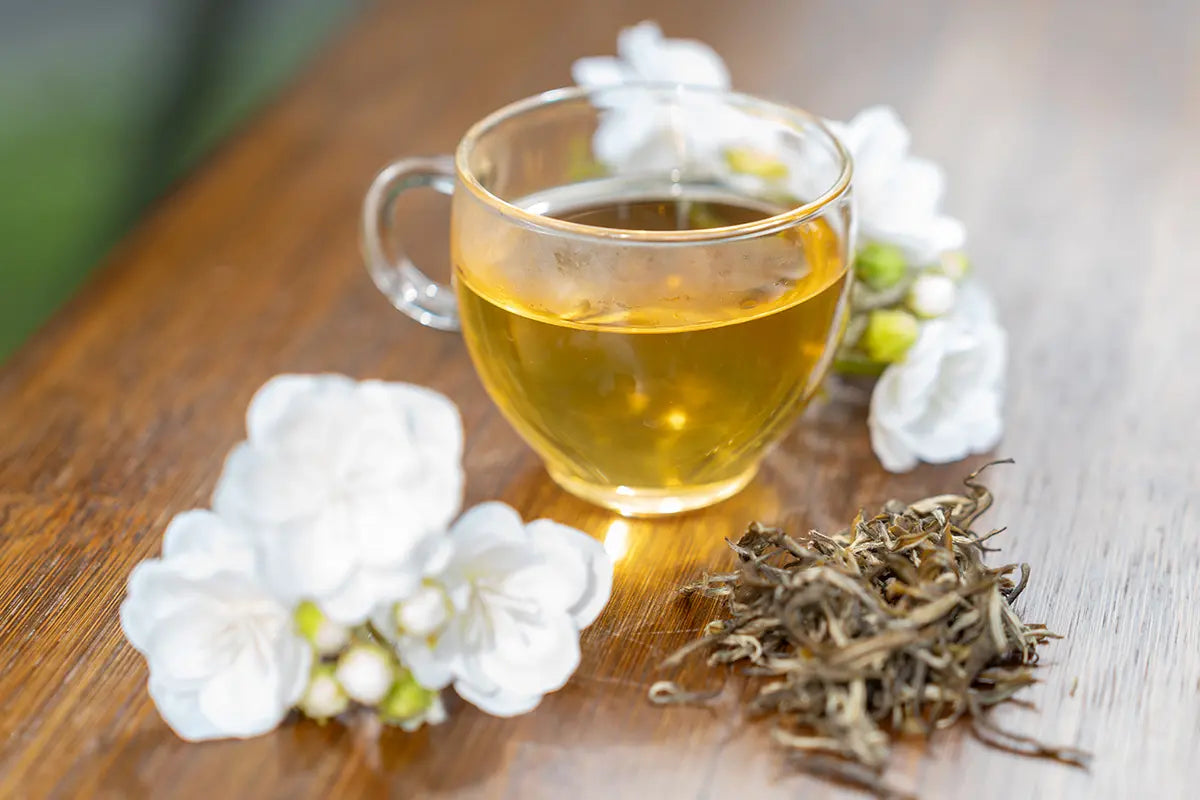
From Jasmine to Tea, You Need to Know About the Process
About Jasmine Tea
Jasmine tea is made by blending tea leaves and fresh jasmine flowers together to allow the tea leaves to absorb the floral fragrance.
Jasmine flower tea has a long history in China. Although it is a relatively niche category among loose leaf tea in China, there are many varieties available, like jasmine green tea, jasmine black tea, etc. The tea leaves commonly used for jasmine tea are loose leaf green tea, with occasional variations using loose leaf black tea, loose leaf oolong tea, and loose leaf white tea.
High-quality jasmine tea is characterized by its enduring aroma, rich and refreshing taste, bright yellow-green infusion, and tender, uniform, and soft leaf base. When selecting jasmine tea, it is recommended to use a tea sampler to discover the jasmine tea that suits your preferences.
Jasmine tea can be enjoyed on its own or used to make delicious beverages such as jasmine milk tea. Jasmine teas can also be delightful choices for gifting as tea gift sets to family and friends.
How is Jasmine Tea Processed?
So, how to make Jasmine tea? Below, we will share the detailed process of making jasmine tea.
The key to making jasmine tea is to extract the aromatic substances from fresh jasmine flowers and then allow the tea leaves to absorb these aromatic substances through certain physical processes. The main steps include:
1.Picking Flowers
Typically, on the afternoon of Yinzhi (scenting), fresh jasmine flowers needed for Yinzhi (scenting) are harvested.
The picking involves selecting pure white, large, and plump jasmine buds. Already opened jasmine flowers are not suitable for this process.
2.Flower Care and Selection
The harvested jasmine buds undergo careful care to ensure even physiological maturity before releasing their fragrance.
The physiological changes of the fresh flowers are controlled through a repeated process of piling and spreading the flowers. When the temperature is low, jasmine flowers are stacked together to raise the temperature, prompting them to bloom. In higher temperatures, jasmine flowers are spread out to dissipate heat, preventing the occurrence of the "burning jasmine" phenomenon.
Finally, most jasmine flowers are in a semi-bloomed state. At this point, a sieve is used to remove unopened buds, bracts, and petals, obtaining the fresh jasmine flowers needed for Yinzhi.
3.Mixing Tea and Flowers
Blend fresh jasmine flowers with dried tea leaves in a certain proportion. The purpose of this step is to ensure direct contact between the tea and flowers, allowing for full absorption and blending of the fragrance.
The key to this step is to thoroughly and evenly mix the jasmine flowers with the dried tea, preventing situations where only the flowers or the tea are visible.
4.Yinzhi (Scenting)
After the tea leaves and fresh flowers are evenly blended, they enter the phase of static Yinzhi (scenting).
During the Yinzhi (scenting) process, the flower and tea mixture is piled with a lower center and higher surroundings to facilitate ventilation and heat dissipation. This prevents an excessively high temperature in the center, ensuring the fragrance remains pure.
Find more loose leaf jasmine tea with our Jasmine Tea Sampler.>>>
5.Tonghua (Turning the Tea and Flower Pile)
During the Yinzhi (scenting) process, the temperature of the tea flower pile will rise. When the temperature reaches a certain point, jasmine flowers may lose vitality, their fragrance-producing capacity weakens, and an unpleasant, stuffy odor may even develop, impacting the overall quality of jasmine tea.
At this point, it is necessary to perform Tonghua, which involves turning over the tea flower pile. The purpose of Tonghua is twofold: to lower the temperature and to stimulate the fresh flowers, helping them regain vitality and continue releasing fragrance.
6.Separation of Flowers and Tea
After Yinzhi (scenting) has reached a sufficient duration, the fresh flowers will wilt and lose vitality.
At this stage, a sieve is used to separate the flowers from the dried tea.
The process should be swift, ensuring that there are no flower stems or leaves in the tea, and no tea leaves in the flower residue.
7.Multiple Scenting Sessions
The process from harvesting fresh flowers to separating tea and flowers is called one scenting session and a complete scenting session typically takes an entire day. After undergoing a full scenting session, jasmine tea needs three days of natural cooling before it can undergo a second scenting session.
Jasmine tea can be scented 3, 5, or even more sessions. The best jasmine tea undergoes up to 9 sessions. Jasmine tea that has undergone nine scenting sessions is considered one of the best loose leaf tea due to its elegant fragrance.
Benefits of Jasmine Tea
Loose leaf jasmine tea is not only aromatic and delicious but also offers various health benefits, including mood regulation, beauty enhancement, heat-clearing and detoxifying effects, and improved digestion.
Mood Regulation:
Jasmine tea helps alleviate emotions, reduce stress, and provides some relief for conditions such as insomnia and anxiety.
Beauty Enhancement:
Rich in vitamin C, jasmine tea possesses antioxidant properties that contribute to skin whitening and maintaining skin elasticity.
Heat-Clearing and Detoxifying:
Jasmine tea serves as an effective agent in clearing heat and detoxifying, helping eliminate toxins from the body and regulating overall balance.
Improved Digestion:
Jasmine tea promotes digestion, aiding in relieving stomach discomfort and increasing appetite.





